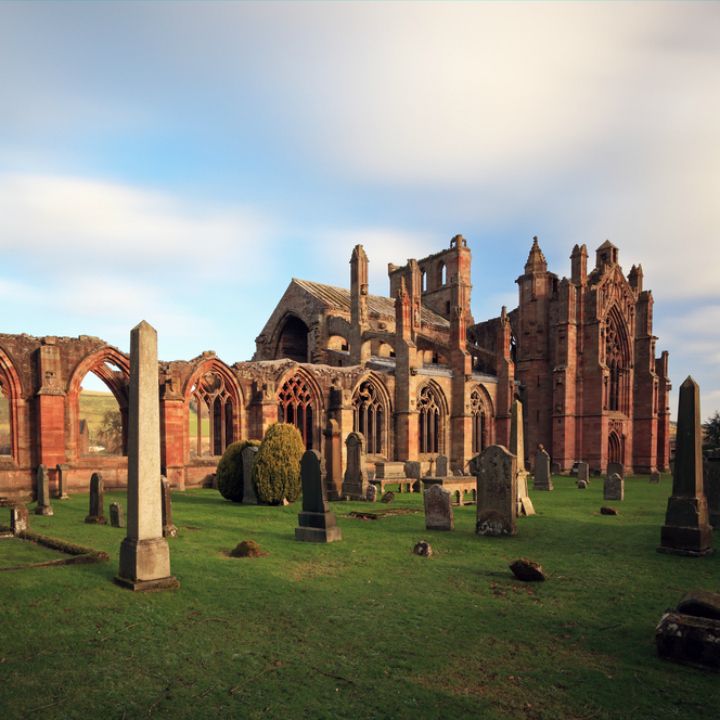With more stately homes, castles and historic sites here than you can shake a proverbial stick at, visitors are quite simply spoilt for choice. So step back in time and discover an area with a tumultuous past now bursting with historical treasures amidst a stunning landscape and magnificent regal architecture. Enjoy!
Castles
Alnwick
Home of the Duke of Northumberland, Alnwick Castle is one of the largest inhabited castles in the UK today and at over 1000 years old, it represents an outstanding example of medieval architecture. Uncover its rich history, tour opulent State Rooms in rich Italian Renaissance style, and admire one of the finest art collections in the country boasting works from Canaletto, Titian, Van Dyck and Turner.
Bamburgh
Sitting forty-five metres above sea level, the great fortification of Bamburgh Castle sits majestically on a rocky plateau above a stunning stretch of Northumberland coastline. Seen as one of the most important Anglo Saxon archaeological sites in the world, pay a visit and discover tales of royal rebellion, bloody battles and powerful legend! You can stay within the castle walls at Neville Tower or The Clock Tower.
Lindisfarne
Accessed from the mainland via a causeway at low tide, Lindisfarne is a picture perfect 16th century castle perched atop a rocky outcrop on Holy Island on the Northumberland coast. Originally an Elizabethan fort built in defence of the realm, and later converted in the early 1900’s by Sir Edward Lutyens, it is now protected under the care of the National Trust.
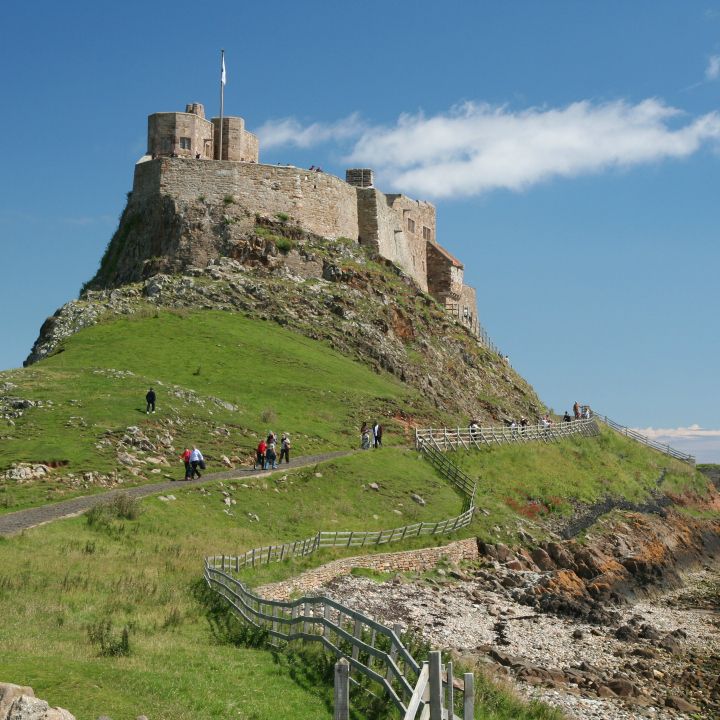
Floors Castle
Home to the Duke and Duchess of Roxburghe, Floors Castle is Scotland’s largest inhabited castle and is located in a beautiful parkland setting on the outskirts of Kelso. Originally designed by leading Edinburgh architect William Adam in 1721, it was later embellished in the early 19th century with turrets and battlements to create a simply stunning residence with a priceless collection of fine art, porcelain and tapestries. You can stay at the Head Gardener's House at Floors Castle.
Thirlestane
Thirlestane Castle, the ancient seat of the Duke of Lauderdale, is set in extensive parklands near to Lauder and its origins date back to the 13th century when a large fort was built on the site to defend the southern approach to Edinburgh. Famous for its unrivaled 17th century plasterwork ceilings, fine furnishings, elegant proportions and turreted skyline, it is guaranteed to leave quite an impression. Oh… and for a truly unique holiday experience, you can even stay in one of the castle apartments: The Maitland, The Lauderdale, The Earl & Countess, The Sculleries or Glenburnie.
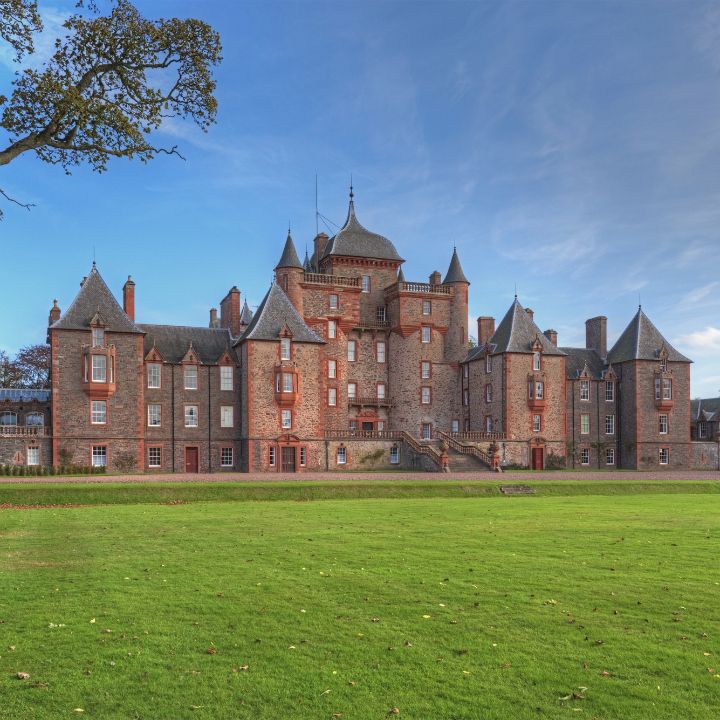
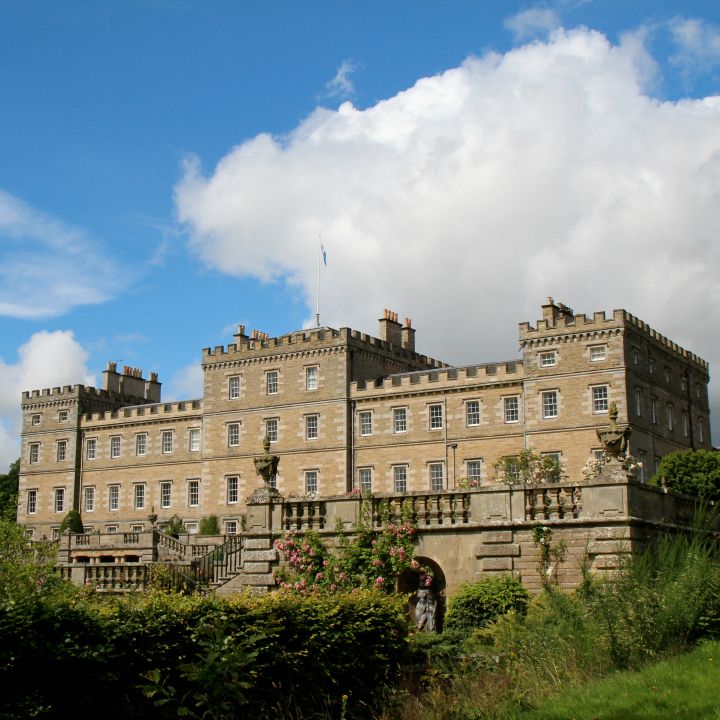
Stately Homes
Paxton
Built in 1758 by architect John Adam, Paxton House is said to be one of the finest examples of neo-palladian architecture in Scotland. It houses one of the UK’s foremost collections of Chippendale and William Trotter furniture, and the Regency Picture Gallery is filled with a superb collection of artworks on loan from the National Gallery of Scotland.
Manderston
Home of Lord Palmer, Manderston is a stunning example of an Edwardian country house set in 56 acres of formal gardens. Built with no expense spared, it features every modern convenience of that era, including sumptuous staterooms, opulent detailing, and an incredible silver staircase - the only one in the world. As the film location for a Channel 4 six-part series on life below stairs, its elaborate domestic quarters give a captivating insight into daily life in the Edwardian period.
Mellerstain
Built in 1725 and finally completed in 1778, Mellerstain House could be described as classically perfect - the grand design among Scotland’s stately homes. Admire Robert Adam’s exquisite architecture and decorative detailing, its fine art collection, embroidery and furniture all set within a beautiful backdrop of ornate terraces and gardens.
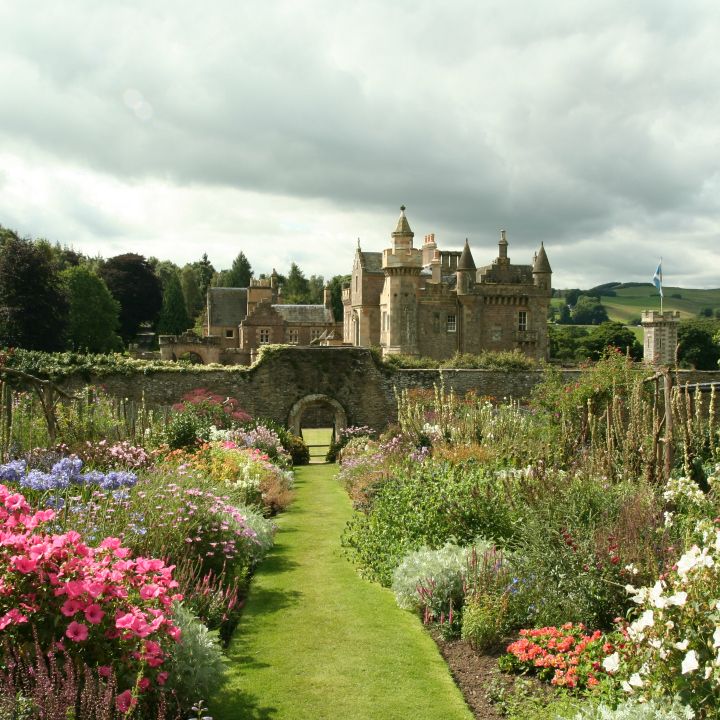
Traquair
Spanning nearly a thousand years of Scottish history, Traquair House is Scotland’s oldest inhabited house. Once a pleasure ground for Scottish Kings in times of peace, then a refuge for Catholic priests in times of terror, the Stuarts of Traquair supported Mary Queen of Scots and the Jacobite cause without thinking the cost. A fascinating house, a fascinating history!
Abbotsford
Abbotsford sits at the heart of the landscape that inspired the poetry and writings of Sir Walter Scott. First started in 1817, the design of the house - his ‘conundrum’ castle - was inspired by his knowledge of local historical buildings and Scottish history. A recent £2.3m restoration project is sensitive to the integrity and original features of this intimate country house, including a treasure trove of artefacts, artworks and furniture associated with this great man.
Bowhill
Christened ‘Sweet Bowhill’ by Sir Walter Scott in his famous poem ‘The Lay of the Last Minstrel’ Bowhill House is steeped in history. Dating from 1812, it is home to the Duke and Duchess of Buccleuch and renowned for its elegant proportions and superb art treasures, including 18th century hand-painted Chinese wallpapers. You can also stay at The Clock Tower or Chauffeur's Flat which are on the estate.
Border Abbeys & Other Historic Sites
The Border Abbeys are four outstanding monastic ruins and are testament to the area’s tumultuous past bearing the full might of attacks by English forces during bitterly fought battles through the medieval period.
To take in the sights of these wonderful monuments, can we suggest you start at Melrose Abbey, a magnificent ruin on a grand scale and said to be the burial place of a casket containing the heart of Robert the Bruce.
Next head over to Dryburgh, the setting for arguably one of the most beautiful abbeys and the final resting place of Sir Walter Scott, perhaps stopping off along the way at Scott’s View for stunning panoramic views across the rolling Border countryside.
Take a gentle stroll through the woods to the mighty Wallace Monument erected in 1814, or possibly take a detour to 15th century Smailholm Tower before heading to the majestic ruin of Jedburgh Abbey, founded in 1138 and a frequent target for invading border armies.
Finally head over to the superb but largely fragmented architecture of Kelso Abbey once occupied by Tironesian monks before taking a drive to Holy Island to take in the rich history of Lindisfarne Priory and the final resting place of St. Cuthbert.
